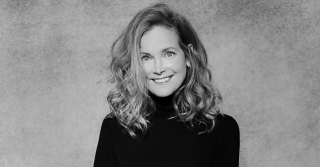
Article from Gazette des femmes | Equality as seen by Anik Bissonnette
In this insightful and inspiring interview, Anik Bissonnette, Artistic Director of the École supérieure de ballet du Québec, reflects on how the world of dance has evolved in terms of equality, diversity, and mutual respect. She shares her clear and thoughtful vision of a ballet world in transformation—one that is more inclusive, more humane, and more attuned to the realities of today’s performers. From artist well-being to the role of women, body representation, and gender-equitable education, this conversation highlights values that the École supérieure actively promotes and invites us to reflect on our own practices.
« Today, we value healthy, strong, athletic bodies. And that's a huge step forward. », Anik Bissonnette, Artistic Director of the École supérieure.
Equality, equity and diversity for women at all levels of ballet and dance in general in Quebec: do you think we're there?
Yes, I feel we are, at least for the most part. The ballet world has really evolved over time. It's fascinating to think that in the days of Louis XIV, only men danced ballet! From the 19th century onwards, women took a prominent place on stage, notably with the arrival of pointe dancing. And today, it's often the ballerinas who capture the collective imagination.
Women occupy a central place in the world of dance. Equal pay is a reality in the professional companies I've known, and I've always felt a great deal of respect between artists, regardless of gender.
It's in the area of diversity that we still have some way to go. Ballet is a discipline that comes from a very white world, but I see great progress being made: more diversity on stage, accessories (pointe shoes, tights and costumes) adapted to all skin tones.
In fact, Canada's leading ballet schools are playing a key role in making the ballet environment more equitable. I'm thinking in particular of L'Évolution du ballet / Ballet Forward, a national project focused on equity, reconciliation and the fight against racism in the ballet milieu, in which students from the École supérieure de ballet du Québec are participating. Ballet culture is changing, and that's encouraging.
What's going on and what's definitely moving in the right direction for women in the vast world of dance, in Quebec and elsewhere?
What strikes me most is the change in the way dancers look at their bodies. When I started out, the dominant model was that of a very thin, almost fragile ballerina. Today, we value healthy, strong, athletic bodies. And that's a huge step forward.
Choreographers are now looking for performers capable of dancing a wide variety of styles. Versatility has become the norm, and this is helping to break down stereotypes. Physical and cultural diversity is increasingly present on stage. Above all, the health of performers is increasingly taken into account. I've seen artistic directors withdraw a dancer from a role because she was too thin, out of concern for her health - an awareness that didn't exist a few decades ago.
At the École supérieure de ballet du Québec, we do a lot of prevention. We work with a nutrition professional, offer mental performance coaching, cooking workshops, and overall support for physical and mental health and well-being. And of course, we teach our students - boys and girls alike - the importance of loving their bodies, respecting them and taking care of them.
What is definitely moving forward in the right direction for women in the vast world of dance, in Quebec and elsewhere?
What strikes me most is the change in the way dancers look at their bodies. When I started out, the dominant model was that of a very thin, almost fragile ballerina. Today, we value healthy, strong, athletic bodies. And that's a huge step forward.
Choreographers are now looking for performers capable of dancing a wide variety of styles. Versatility has become the norm, and this is helping to break down stereotypes. Physical and cultural diversity is increasingly present on stage. Above all, the health of performers is increasingly taken into account. I've seen artistic directors withdraw a dancer from a role because she was too thin, out of concern for her health - an awareness that didn't exist a few decades ago.